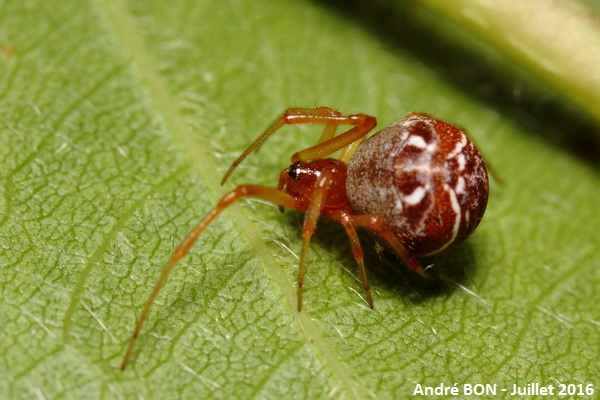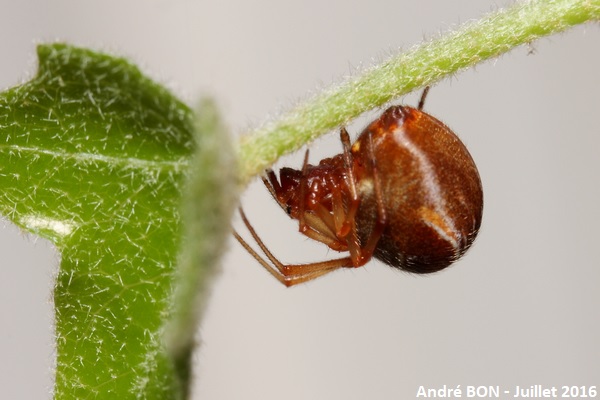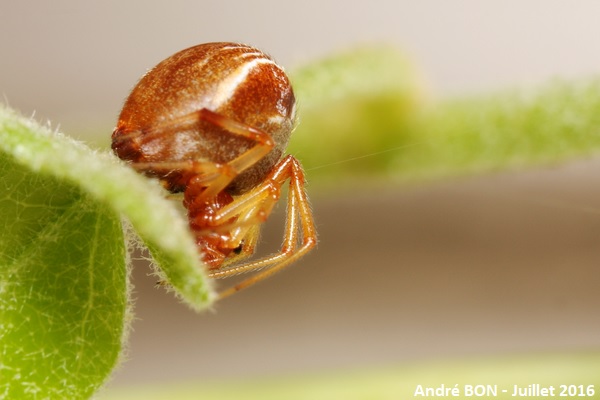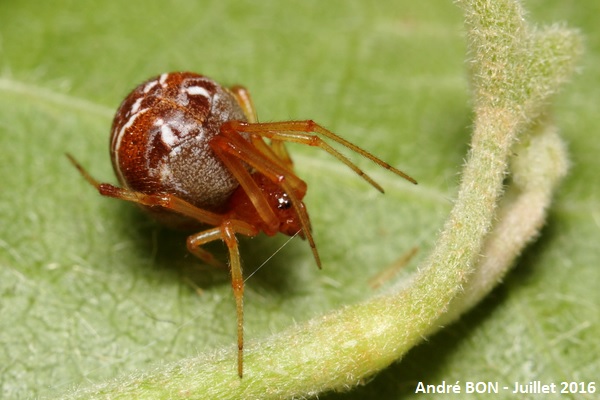



| Parasteatoda lunata (Clerck, 1758) |




|
|
Scientific name: Parasteatoda lunata (Clerck, 1758) Common name: French name: Théridion au croissant Order: Araneae Family: Theridiidae Size: 2.7 to 5.6 mm. Biotope: Wooded areas, mainly in trees and shrubs, on trunks or branches. Web: Three-dimensional web made up of intersecting threads and often placed in the fork formed by the trunk and the start of a branch, up to 2 meters above the ground. There is often a dead leaf and/or other hanging debris there, used as a shelter by the spider. Observation period: Adults are visible from May to July for males and from May to September for females. Geographic area: Palaearctic region. |
Parasteatoda lunata shows an abdomen which is much higher than long (characteristic shared by the other members of the Parasteatoda genus). The cephalothorax is dark reddish-brown, sometimes almost black. The abdomen is brightly coloured with red, orange, black and white. There are several crescent-shaped white bands. The rearmost draw a V-shaped mark. The legs are yellowish brown with darker rings at the tip of the femurs. The spherical cocoons are hooked by the female in the three-dimensional web. Young spiderlings will overwinter after dispersal. |
| [To know more about the Parasteatoda lunata] [Next picture] [Top] |

|
Here is Parasteatoda lunata with its colourful abdomen and its typical white markings. |
| [To know more about the Parasteatoda lunata] [Next picture] [Previous picture] [Top] |

|
The abdomen is distinctly higher than long. |
| [To know more about the Parasteatoda lunata] [Next picture] [Previous picture] [Top] |

|
Here is the typical position of Parasteatoda lunata with its legs folded close to the body. |
| [To know more about the Parasteatoda lunata] [Previous picture] [Top] |

|
I still have to photograph the web and the cocoons, that will be for another time. |